
All News
California's answer to the Aussie coffee cup crisis
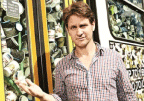 To read this media coverage in Packaging News AU, click the following link: http://www.packagingnews.com.au/sustainability/california-s-answer-to-the-aussie-coffee-cup-crisis#d5Sz5HMDgLBL6giM.99
As Craig Reucassel's War on Waste series tackles the issue of disposable paper cups this week on the ABC, a Californian campaigner is preparing to offer Australians a new solution.
As Reucassel will point out to consumers in the next episode tonight, traditional paper cups are too difficult to recycle because of their interior plastic coating.
Specialised equipment needs to be put in place to remove the plastic, but even then, the process is burdensome and costly, and ultimately, the economics aren't in place to incentivise recyclers to even try to recycle paper cups.
Will Lorenzi, the president of California-based Smart Planet Technologies (SPT), believes he has a solution to this widespread problem in the form of the R3 cup, which is engineered for recyclability.
He's already been working to effect change by way of the cup in the US and the UK, and is now discussing his options with vendors in Australia.
The cup is currently in use in a variety of coffee houses in the US, and will be commercially available in the UK starting July 2017, Lorenzi says.
In Australia, a company called Closed Loop Environmental Solutions, which has been in talks with Lorenzi, is also currently investigating an economically feasible collection and recycling program called Simply Cups.
“SPT is finalising a partnership with Simply Cups, Australia’s recently launched coffee cup recycling program, to ensure the cups are collected for recycling,” Closed Loop sales and marketing manager Brendan Lee said.
The R3 cup from SPT has an interior coating called EarthCoating that works just as well as polyethylene in forming the cup, according to Lorenzi.
It looks the same for the consumer experience, but for the recycler the cup recycles as if there is no coating at all.
“This allows all of premium fibres to be recycled efficiently and profitably by traditional residential recycling without specialised equipment, and that's the best way to solve this problem,” Lorenzi says.
"Change the coating, and the paper cup becomes a valuable material to recycle."
To read this media coverage in Packaging News AU, click the following link: http://www.packagingnews.com.au/sustainability/california-s-answer-to-the-aussie-coffee-cup-crisis#d5Sz5HMDgLBL6giM.99
As Craig Reucassel's War on Waste series tackles the issue of disposable paper cups this week on the ABC, a Californian campaigner is preparing to offer Australians a new solution.
As Reucassel will point out to consumers in the next episode tonight, traditional paper cups are too difficult to recycle because of their interior plastic coating.
Specialised equipment needs to be put in place to remove the plastic, but even then, the process is burdensome and costly, and ultimately, the economics aren't in place to incentivise recyclers to even try to recycle paper cups.
Will Lorenzi, the president of California-based Smart Planet Technologies (SPT), believes he has a solution to this widespread problem in the form of the R3 cup, which is engineered for recyclability.
He's already been working to effect change by way of the cup in the US and the UK, and is now discussing his options with vendors in Australia.
The cup is currently in use in a variety of coffee houses in the US, and will be commercially available in the UK starting July 2017, Lorenzi says.
In Australia, a company called Closed Loop Environmental Solutions, which has been in talks with Lorenzi, is also currently investigating an economically feasible collection and recycling program called Simply Cups.
“SPT is finalising a partnership with Simply Cups, Australia’s recently launched coffee cup recycling program, to ensure the cups are collected for recycling,” Closed Loop sales and marketing manager Brendan Lee said.
The R3 cup from SPT has an interior coating called EarthCoating that works just as well as polyethylene in forming the cup, according to Lorenzi.
It looks the same for the consumer experience, but for the recycler the cup recycles as if there is no coating at all.
“This allows all of premium fibres to be recycled efficiently and profitably by traditional residential recycling without specialised equipment, and that's the best way to solve this problem,” Lorenzi says.
"Change the coating, and the paper cup becomes a valuable material to recycle."
A Better Solution for Coffee on the Go
As seen in Fresh Cup Magazine, May 2017http://www.freshcup.com/a-better-solution-for-coffee-on-the-go/
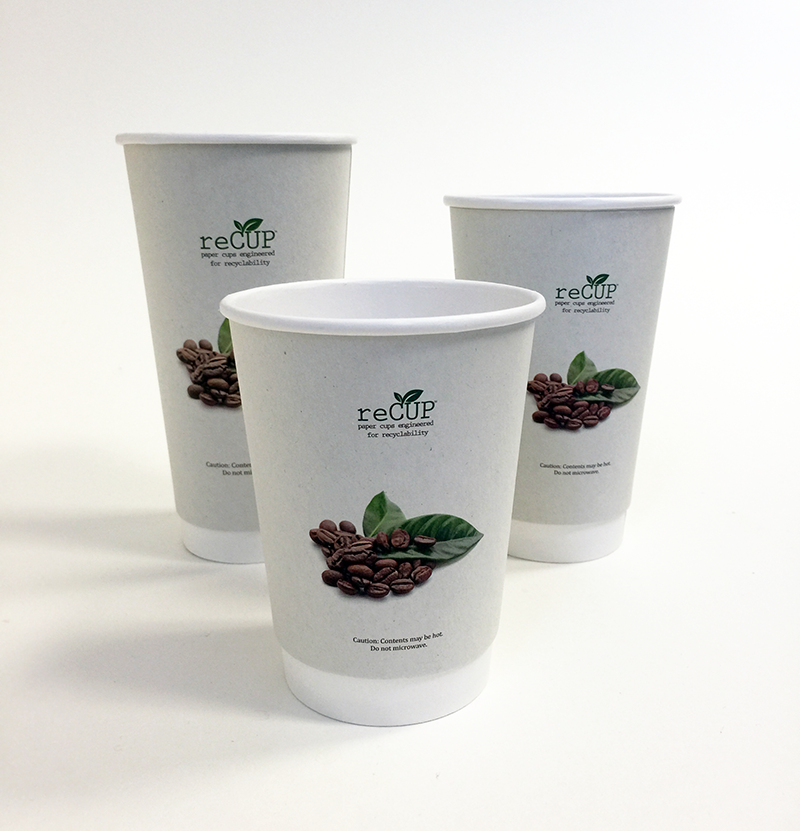
It’s Saturday morning: the cribbage board is out, a newspaper lays splayed open on the counter, and the kettle spits steam as water heats for a pour-over. I cradle my ceramic mug in both hands, carrying it ceremoniously to the Chemex, eager to capture the aromas of first bloom before settling in for a leisurely morning of cards.
My idealistic view of coffee consumption? Certainly. An everyday ritual? Hardly. Sure, it would be nice if we were all in the habit of sitting and sipping our coffee and tea from hand-crafted mugs. But that’s a far cry from reality when it comes to consumer behaviors. To-go culture is alive and well—and creating lots of waste. While the majority of a to-go cup is comprised of paper, traditional take-away cups are rejected by recycling companies because of the polyethylene coating used to keep the cup liquid friendly. This lining is incompatible with standard paper recycling processes, and as such, cups are often treated as waste. A few specialized recyclers have invested in processes to remove the polyethylene coating found on traditional paper cups, but, the process is costly and the rendered fibers are low in quality—only usable in a low-value application such as tissue paper. The ability to transform a paper cup into high-quality recycled paperboards is key—cups need to be made of material that’s valuable to recycle to incentivize recycling facilities to get on board. It’s unlikely we’ll see a massive changeover to ceramic cups anytime soon (though we’re trying to inspire a movement). In the meantime, how can “coffee on the run” be made more sustainable? The next best thing after ceramic would be a cup that’s affordable for cafés to use, performs as well as a traditional paper cup, and can be manufactured with the same process and equipment as traditional cups. This ideal cup would also be engineered to be recyclable in standard recycled paper mills—profitably—as if there was no polyethylene coating at all, allowing it to be used in high-quality recycled paperboards. The makers of reCUP believe they’ve found this ideal solution. They’ve created a fully recyclable paper cup that meets the above criteria. The new cup technology was engineered by Smart Planet Technologies and uses an interior coating called EarthCoating, a mineralized blend of polyethylene and calcium carbonate. The cup is designed to be fully repulpable and recyclable using traditional paper recycling equipment and processes. The ability to transform a paper cup into high-quality recycled paperboards is key—cups need to be made of material that’s valuable to recycle to incentivize recycling facilities to get on board. The new recyclable to-go cup is also winning over major names in coffee that are looking to influence a wave of change industry wide. UK coffee giant Costa Coffee made global headlines when they announced plans to run product tests with reCUP as part of an effort to transition to using fully recyclable cups. Costa had already taken steps to promote in-store recycling of traditional cups, but also opted to explore early adoption of reCUP to allow customers to recycle cups anywhere. As more cafés offer a recyclable takeaway cup, pressure builds for industry-wide adoption. With increased volume of recyclable cups, additional recycling jobs are required to meet the demand for processing reusable materials, extending the reach of sustainability afforded by to-go cup technology far beyond the café.
We may be far from adopting an everyday ceramic habit, but we’re certainly a significant step closer to ending the unnecessary waste caused by to-go cups.
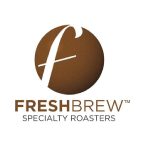
In the Wild
FreshBrew, one of the largest US-based coffee roasters and the coffee partner of American Airlines, has recently begun exploring how EarthCoating may be used as an environmentally friendly alternative to traditional plastic coatings for the paper cups and other paperboard barrier packaging they use to serve their products.
Costa trials reCUP paper cup in bid to boost recycling
To read the story in Packaging News UK, click the link below:http://www.packagingnews.co.uk/news/markets/drinks/costa-trials-recup-paper-cup-in-bid-to-boost-recycling-22-03-2017 Costa Coffee is evaluating Smart Planet Technologies’ reCUP paper cup to use in its stores. If successful the cups could help improve acceptability of paper cups for out-of-store collection and recycling. Now, Costa Coffee is addressing challenges in out-of-store recycling by conducting a comprehensive evaluation of the reCUP to improve the process-ability and acceptance of paper cups in standard recycling facilities across the UK, while maintaining the performance standards of Costa Coffee’s takeaway paper cup. The evaluation will also validate the acceptance of reCUP paper cup technology under UK and EU regulations for paperboard packaging. Will Lorenzi, president of Smart Planet Technologies, said a switch by Costa to the reCUP would serve as a ‘proven option’ for the rest of the foodservice packaging industry in the UK to consider, instead of paper cups that that are unacceptable to the standard recycling facilities. “The reCUP has the potential to address the entire issue in a cost-effective manner, and provide the recycling industry with a new source of feedstock for recycled paper packaging.” He added the cup could prove to be a cost-effective transition, that is manufactured on standard paper cup forming equipment at full line speeds. Traditionally, paper cups have been coated on the interior with polyethylene or other plastics, to form the cup and hold liquid contents, but which has made paper cups difficult to recycle in standard paper recycling processes. This is the main reason for the low recycling rates when it comes to paper cups.
A Dirty Secret
by Pan Demetrakakes
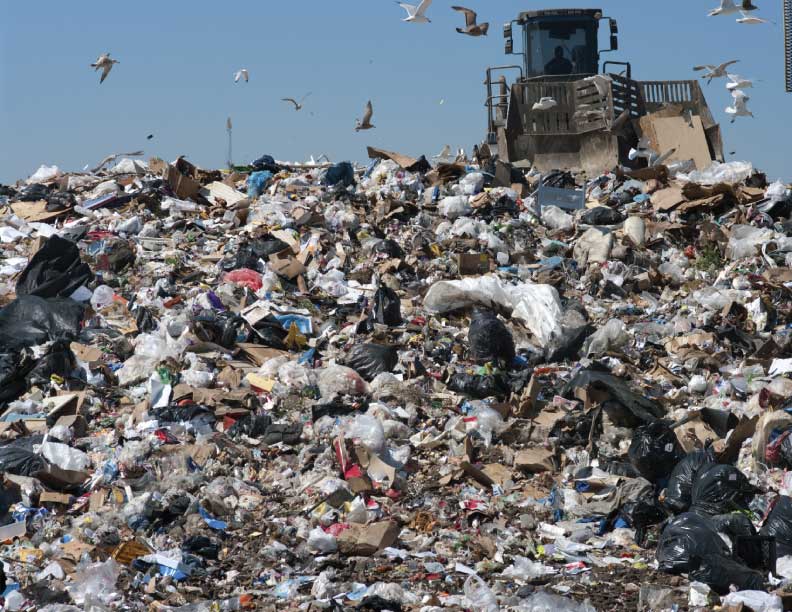
In a lot of coffeehouses, the trash has a dirty secret. No matter how ecologically minded the owners or clientele are, no matter how carefully the paper coffee cups are separated from the rest of the garbage, those cups are destined for a landfill.
To read the full article, click this link: A Dirty Secret
Seventh Generation Improves the Recyclability of its Cartons
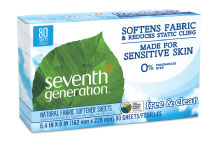 Click the link below to read the article in Packaging Digest Magazine:
Click the link below to read the article in Packaging Digest Magazine:
http://www.packagingdigest.com/sustainable-packaging/seventh-generation-improves-the-recyclability-of-its-cartons-2017-01-12 By replacing its poly-coated carton for fabric softener sheets with an economical recyclable/repulpable alternative, Seventh Generation qualifies for the “Widely Recycled” claim on its How2Recycle label and gets a step closer to its 2020 zero-waste goal. Yet this new carton—which marks its national debut in the first quarter of 2017 for the company’s 80-count fabric softener sheets in two fragrances: Free & Clear and Blue Eucalyptus & Lavender—offers better barrier properties. How is this possible? The eight-month-long project began in March 2016 and the updated production specification was officially released in November. The packaging change did not require a switch in carton suppliers (Seventh Generation sources this carton from two companies but prefers not to identify them)—but it did require a change in paperboard for the cartons. The new board stock is HiQ Eco(B) from Hansol Paper, the largest paper mill in Korea, and contains at least 60% post-consumer recycled (PCR) content and sometimes as much as 88%. HiQ Eco(B) paperboard uses EarthCoating from Smart Planet Technologies as the liner. Hansol Paper began licensing the EarthCoating technology at the end of 2015. EarthCoating is created by blending low-cost calcium carbonate into polyolefin resin, which displaces between 40% and 60% of the plastic. According to Smart Planet Technologies, EarthCoating is engineered for efficient processing in paper recycling systems. It fractures into small, dense particles in the pulping process, thereby avoiding the challenges found with traditional plastic coatings on paperboard. EarthCoating is repulpable and recyclable because of the blending in of the minerals, and it behaves differently in the pulper. That’s why the package qualifies for the “Widely Recycled” label. The reduction of plastic is a bonus attribute, but highly appealing as well. Kelly Murosky, Seventh Generation packaging engineer, says, “That is important to us as we look to remove all virgin petroleum-based plastics from our packaging materials by 2020. Many of our bottles are already 100% PCR.” The EarthCoating mineralized poly compound is extrusion coated onto the paperboard at high speeds. This alternative barrier coating is waterproof and grease-proof, as well as heat sealable. Although not needed in this case, EarthCoating is also compliant with the Food and Drug Administration (FDA) for food contact applications. For the Seventh Generation dryer sheets project, the base paper is 400 grams per meter squared and the EarthCoating is 20 g/m2, applied on the inside of the carton. (EarthCoating can also be applied to a package exterior, providing barrier properties and a premium print surface.) By making this change in packaging materials, Seventh Generation is able to upgrade its cartons from the less appealing “Check Locally” description on the How2Recycle label from the Sustainable Packaging Coalition to the coveted “Widely Recycled” category. Murosky answers Packaging Digest’s questions about the project. Why is it so important to qualify for the “Widely Recycled” claim? Murosky: We try to reduce our packaging materials sent to landfill. Zero waste is one of our 2020 goals, so we strive to design products and packaging that is recyclable or biodegradable.
Did you make any other changes to the packaging at the same time (graphics, for example)? Murosky: No other changes were made besides the paperboard substrate and coating. Our How2Recycle logo will need to be updated on the artwork, but we’re waiting to make that change because other artwork updates are in the pipeline for the fabric softener sheet cartons. [Editor’s note: All those updates will appear in 1Q2017.] Was the change a cost-neutral solution? Was that an important consideration in your decision to make the switch? Murosky: Yes, the change was cost neutral. As with any project, you want to keep cost increases to a minimum. However, as a company, we have an internal carbon tax that we use to fund packaging sustainability changes. Essentially that fund helps offset the price increase to new sustainable packaging components so that it does not affect margin. Luckily, in this case, we did not have a cost increase to offset. What other solutions did you consider and why didn’t you go with them? Murosky: No other solutions were considered. We would have stuck with our current poly coating if the project was not successful. Did your manufacturing partner [which Seventh Generation asked not to be named] have to make any changes to the packaging line because of the new cartons? Murosky: No line changes were needed. The new board substrate had no effect on packing line efficiencies or scrap. What tests did you do to ensure the new box was compatible with the product and protected it? Murosky: We have a vigorous qualification process at Seventh Generation. I put the product through a variety of tests to ensure that the new substrate preformed at parity or better to our current configuration. There was a: • Graphics review to ensure the new board substrate had the same print quality; • Box performance testing (carton drop tests, case drop tests, tear feature test, environmental chamber testing) to ensure that the board adequately protected the substrate (fabric softener sheets) and prevented oil migration; • Substrate compatibility testing to ensure that the mineralized poly-coating did not interact with our fabric softener sheets in any way. We also had each of our suppliers preform testing: • Converting (printing/cutting) trials at the carton supplier; • Packaging line trials and substrate compatibility evaluation at our manufacturing partner; • Third-party lab testing to evaluate board performance (oil resistance, water absorption, water-vapor transmission rate/WVTR). What did the results show regarding the package’s barrier properties? Murosky: The barrier properties of the EarthCoating performed better than our previous packaging, allowing us to confidently make the switch. Did you do any tests yourselves on the recyclability of the package or was that all handled as part of the How2Recycle label application process? Murosky: That was all handled by Smart Planet to receive the “Widely Recycled” logo certification from the Sustainable Packaging Coalition. How much did Walmart’s Sustainability Index, or the new Playbook, influence your decision to go with this particular package? Murosky: It actually didn’t really affect our decision. The project was basically complete when Walmart’s Sustainable Packaging Playbook came out. As a brand, we are always trying to push the limit on packaging sustainability and meet our 2020 sustainability goals. Where are your fabric softener sheets sold? Murosky: Across the USA. Our top buyers are Amazon, UNFI and Kehe. Do you plan to replace other cartons/boxes with this package? Murosky: Yes, we are looking into it for our two other poly-coated paper carton packaging configurations used for boxed powders: Natural Powdered Laundry Detergent and Auto Dish Powder.
